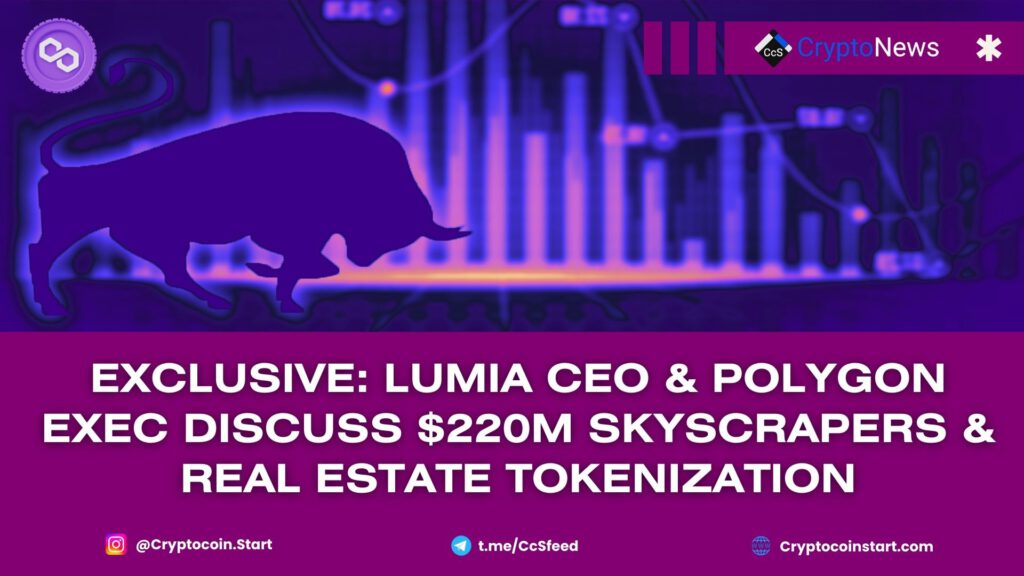
The Vision Behind Lumia Towers
According to Lumia CEO Kal Ali, Lumia Towers signifies a breakthrough in real-estate ownership. By utilizing the tokenization model, Lumia aims to make the real estate market more accessible, transparent, and seamless for retail investors. This approach could democratize real estate investments, allowing smaller investors to purchase fractional ownership in high-value properties.
Tokenizing real estate could also significantly impact the growing $187 billion market for tokenized real-world assets (RWAs). Experts predict that by 2030, this market could see exponential growth, reaching anywhere from $3.5 trillion to $10 trillion, reflecting a 50-fold increase. However, the project will need to overcome several challenges, including regulatory complexities and market liquidity issues, to unlock its full potential.
The Challenges of Real Estate Tokenization
Despite the promise of democratizing real estate investment, challenges remain. One significant issue is the liquidity of tokenized real estate. For tokenization to work effectively, active secondary markets must be developed, allowing for easy buying and selling of tokens representing property ownership. Without sufficient trading volume, investors may struggle to liquidate their holdings, limiting the anticipated benefits of tokenized real estate.
Additionally, there are technological hurdles, such as integrating physical assets with digital tokens, which need to be addressed for tokenization to gain mainstream adoption. The Lumia team has not yet provided a clear solution to these issues, though they continue to work on refining the model.
Ownership Structure and Governance Model
Lumia Towers will utilize Special Purpose Vehicles (SPVs) to hold ownership rights for the tokenized real estate. These SPVs will issue ERC-20 tokens on the blockchain, representing fractional ownership in the towers. Token holders will have governance rights, enabling them to vote on key decisions related to the property, such as whether to rent or sell units.
Tokens will be deployed on the Lumia Chain, which aims to provide easy access to retail investors. The tokens will also have access to decentralized finance (DeFi) protocols through the Lumia Ecosystem, allowing for greater flexibility in how investors engage with their holdings.
The Role of Polygon in Tokenizing Real Estate
Polygon Labs plays a key role in making the tokenization of Lumia Towers possible. Polygon’s blockchain infrastructure is designed to handle high-value applications, ensuring that tokenization can occur without incurring prohibitive transaction costs or delays. Polygon’s solutions allow for faster and more affordable tokenization, which is critical for a $220 million project like Lumia Towers.
Boris Spremo, Head of Enterprise and Financial Services at Polygon Labs, explained that Ethereum’s high transaction fees and slow confirmation times are not ideal for fractionalizing ownership of large assets. Polygon addresses these issues, making it more feasible to tokenize real estate at scale.
Expansion and Future of Real Estate Tokenization
Looking beyond the Lumia Towers project, Lumia CEO Kal Ali shared plans to expand the model into other regions, including the Middle East, North Africa, the United States, and Europe. The team is focused on bringing tokenized real estate to a global audience and revolutionizing the way people invest in property.
Emerging Trends in Real Estate Tokenization
Boris Spremo from Polygon Labs also outlined three emerging trends in real estate tokenization:
- Tokenization of Entire Neighborhoods: Instead of tokenizing individual buildings, future projects may focus on entire districts, fostering community governance and creating aligned incentives between residents and investors.
- Integration with Financial Products: Real estate tokenization will likely be combined with other financial products, such as mortgage lending and insurance, providing developers with direct access to tokenized property markets.
- Traditional Financial Institutions Entering Web3: Tokenized real estate may serve as a gateway for traditional financial institutions, such as banks and investment funds, to enter the Web3 space.
Potential Pitfalls of Real Estate Tokenization
Despite the potential for tokenized real estate to revolutionize the market, risks remain. Technical vulnerabilities, including smart contract issues, could expose investors to loss. Furthermore, speculative trading could lead to overvaluation of assets, making tokenized real estate more volatile than traditional investments.
Traditional real estate risks—such as property management challenges, tenant vacancies, and maintenance costs—will also remain. For instance, RealT, a Florida-based crypto real estate firm, encountered issues with tenant management and unpaid taxes in its own tokenized property venture in Detroit, highlighting the need for better management practices in the space.
Conclusion: The Future of Tokenized Real Estate
While the potential of tokenized real estate is enormous, the path forward is not without its obstacles. Projects like Lumia Towers could help pave the way for a new era of fractional property ownership, but challenges such as liquidity, technological integration, and regulatory compliance must be addressed. As blockchain technology continues to mature, the future of real estate investment could look very different, with tokenization leading the way.

